I’m always combing the media, looking for both the useful and the absurd on food and diet and eating. There’s certainly never a shortage of either. Much of what populates the print and other media is not particularly helpful. But it is possible to glean some excellent advice and guidance. The best pieces can help us navigate what journalist Michael Pollan has called the “truly treacherous landscape” of our food world. Or, as I’m more apt to put it, to help us find and stay on our path to sane eating.
This past week, I’ve encountered three such pieces. For starters, I point to the most recent Nutrition Action newsletter (www.cspi.org), and its cover interview with Kelly Brownell, Ph.D., of Yale’s Rudd Center for Food Policy and Obesity. Here, in just a few brief passages, Brownell sums up how the food industry keeps us eating too much, and too much of the stuff that makes us fat and unhealthy. (See also David Kessler’s book The End of Overeating, Rodale Press; 2009.) A big part of EatSanely’s premise—“It’s Not Your Fault”—emerges clearly here. So does the question that inevitably follows, “So what should I do about it?”
Answers to that question, of course, fill thousands of self-help books and all those articles I sift through. Brownell offers his ideas. And a fuller, excellent, response could take the form of Amy Maclin’s article for the May 2010 Body & Soul magazine, “Balanced Weight Loss”. This article, while short, manages to condense the most up-to-date appetite and weight loss science in a clear and useful way. It, too, echoes the “it’s not your fault….and you’ve still got to do something about it” idea. But here we’re talking about our hormones and physiology and metabolism, and not necessarily the marketers who constantly challenge them. Helpfully, it does discuss how best to work with the key factors that diet science now illuminates.
Health, and the factors from marriage to medicine that affect it, take up the entire April 18 issue of the New York Times Magazine. Of course, some articles naturally concern food and diet. One relevant piece is Gretchen Reynolds’ on the frontiers of exercise science (“Weighing the Evidence on Exercise”). While this article indeed reinforces the truism that exercise is good for weight and health, it delves into the how and why and for whom in ways that exceed what we typically get in magazine fitness writing. Exercise doesn’t always or necessarily lead to weight loss–it’s more complicated than that. However, those who exercise are much more likely to keep unwanted weight off. And anything beats sitting, as far as weight goes. These are definitely take-home facts to keep in the “what I can do about it” file.
Also of note in this issue are “The Fat Trap,” by Peggy Orenstein, which questions how we keep our kids free of eating disorders when we’re conflicted about food ourselves. “The Cheat: Salad Day”, by restaurant critic Sam Sifton, is both funny and informative, and it includes a good basic vinaigrette recipe. And all that surely counts as helpful.
Notes:
“In Your Face: How the Food Industry Drives Us to Eat,” interview with Kelly Brownell, Ph.D., Nutrition Action, May 2010, www.cspi.org
“Balanced Weight Loss,” by Amy Maclin, Body & Soul, May 2010, www.wholeliving.com
The New York Times Magazine, The Wellness Issue, April 18, 2010, www.nyt.com



